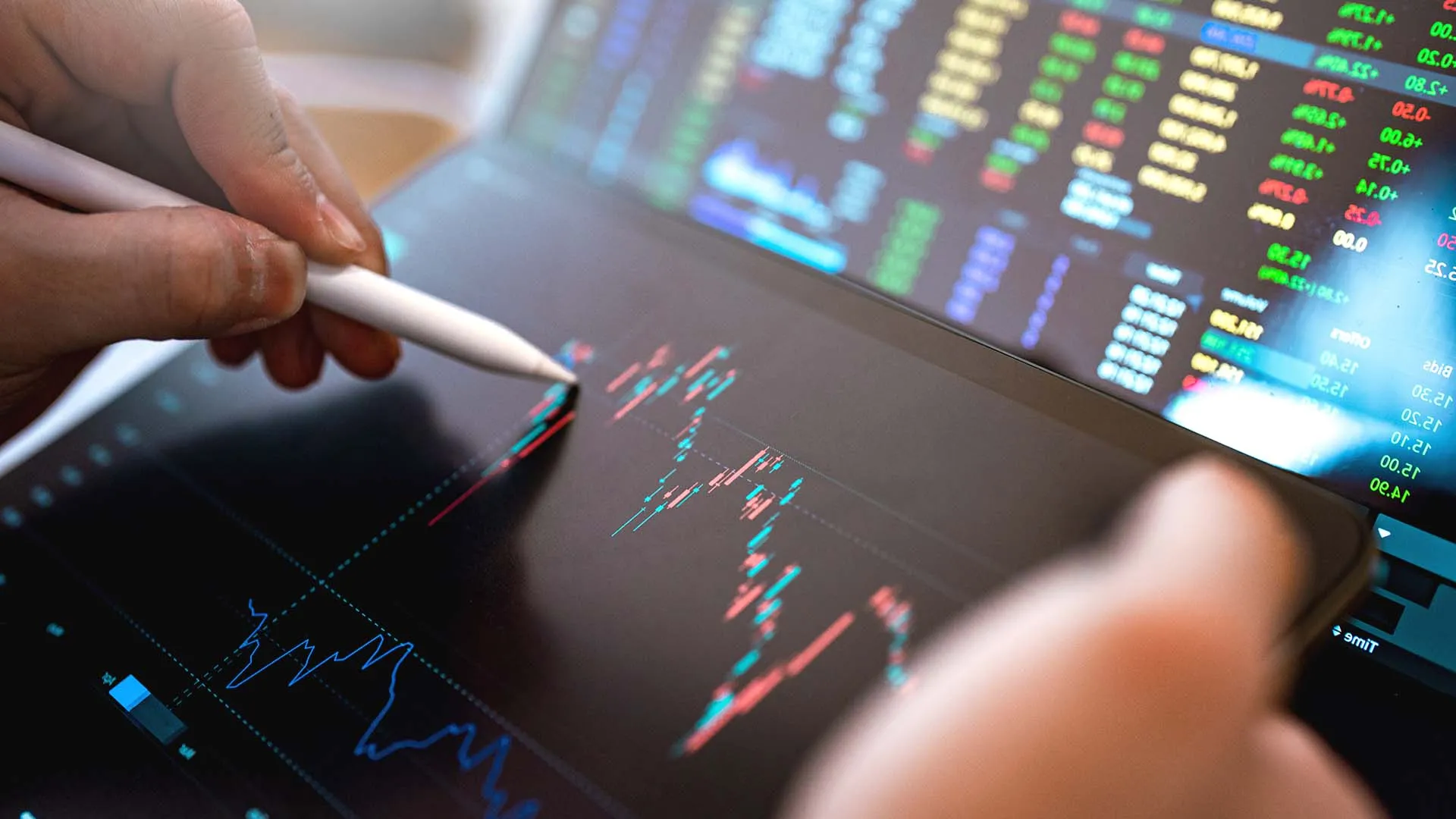Technical Analysis: A Comprehensive Guide to Successful Trading

Technical Analysis
Hey there, market explorers! Ever wonder how traders seem to guess where stock prices are headed? It’s not luck—it’s technical analysis, a handy trick to predict price moves using past data. In today’s fast-moving financial world, making smart choices is everything, and this tool can help you win. At InvestingView.in, we’re here to break it down for you—no fancy terms, just simple ideas to get you started. Let’s jump into what technical analysis is, how it works, and how you can use it to trade smarter in 2025!
What Is Technical Analysis?
Imagine you’re trying to predict tomorrow’s weather by looking at past patterns—sunny days often follow clear skies, right? Technical analysis is like that for stocks. It’s all about studying old price and trading data to guess what’s next. The big idea? Prices move in patterns, and if you spot them, you can make better calls on where the market’s going.
Why Charts Are Your Best Friend
Charts are the heart of technical analysis—they’re like a map of a stock’s journey. They show price changes over time in an easy-to-see way, helping you catch trends or guess when prices might turn. You’ll see three main types:
- Line Charts: A simple line tracking price.
- Bar Charts: Bars showing highs, lows, and closes.
- Candlestick Charts: Colorful bars that tell a story—more on these later!
Quick Tip: Start with candlesticks—they’re fun to read once you get the hang of it!
The Basics of Technical Analysis
Here’s what makes it tick:
- The Market Knows It All
- Prices already include everything—news, rumors, everything. So, you don’t need to chase headlines—just watch the price.
- Prices Love Trends
- Stocks don’t jump around randomly—they follow paths: up (bullish), down (bearish), or flat (sideways). Spotting these paths is your key to trading success.
My Take: It’s like following footprints—once you see the trail, you know where to step!
Tools to Make It Easy
Think of these as your trading toolkit—simple gadgets to spot opportunities:
- Moving Averages
- What: A line that smooths out price bumps to show the trend.
- Types: Simple (SMA) averages the last few days; Exponential (EMA) focuses on recent prices.
- Why: If the price crosses above this line, it might keep rising—time to buy!
- Relative Strength Index (RSI)
- What: A number (0-100) showing if a stock’s too hot (over 70) or too cold (under 30).
- Why: Over 70? Maybe sell. Under 30? Maybe buy. It’s like a speedometer for price moves!
- Bollinger Bands
- What: Three lines—a middle one (SMA) with two edges showing how wild prices are swinging.
- Why: If the price hits the edge, it might bounce back—watch for turnarounds!
Hack: Use InvestingView.in’s real-time charts to see these tools in action—no guesswork!
Simple Strategies to Start With
Here’s how to turn those tools into trades:
- Support and Resistance
- Support: A price where buyers jump in—like a floor (e.g., ₹500 for SBI).
- Resistance: A ceiling where sellers push back (e.g., ₹520).
- How: Buy near support, sell near resistance—easy wins!
- Trendlines
- What: Lines you draw connecting price highs or lows on a chart.
- Why: They show the trend’s direction—up, down, or flat—and when it might flip.
- Candlestick Patterns
- What: Shapes like “Doji” (a tiny bar) or “Hammer” (a long tail) that hint at what’s next.
- Why: A Hammer after a drop? Prices might climb—time to act!
My Favorite: The “Morning Star” pattern—it’s like a sunrise signaling a price jump!
How to Use Technical Analysis in Trading
Let’s put it to work:
- When to Jump In or Out
- Look at support/resistance, trendlines, or indicators like RSI. Example: Buy at ₹500 (support) if RSI says “oversold,” sell at ₹520 (resistance).
- Stay Safe with Risk Management
- Set a stop-loss: If you buy at ₹500, sell at ₹490 if it drops—no big losses!
- Aim for reward: If you risk ₹10, target ₹20 profit—keep the odds in your favor.
Real Talk: I’ve saved my wallet with stop-losses—don’t skip this!
Why Technical Analysis Rocks
In 2025’s Indian market—think Nifty highs and tech stock swings—technical analysis is your shortcut to smart trades. It’s not about knowing everything; it’s about seeing patterns and acting fast. Whether you’re trading Reliance or a hot mutual fund stock, these tricks help you stay ahead.
Your Simple Start Plan
Ready to try it? Here’s how:
- Open a demat account (Zerodha’s quick).
- Pick a stock—say, Tata Motors (it moves!).
- Check its chart on InvestingView.in—spot a trend or support.
- Start small—trade ₹5,000 and set a stop-loss.
Wrapping Up
Technical analysis isn’t rocket science—it’s just watching prices and making moves. With charts, tools like moving averages, and a little practice, you’ll feel like a pro in no time. What stock will you try it on first? Let me know below—I’d love to hear how it goes! Let’s make trading simple and fun together.
Happy Trading! Note: Markets are risky—only use spare cash and talk to an expert if needed.
Corrections and Improvements
Streamlined strategies (support/resistance, trendlines) for beginners.
Simplified Language:
Original: “study of historical price and volume data to forecast future price movements” → New: “looking at old price data to guess what’s next.”
Removed dense terms (e.g., “market efficiency”) and explained simply (e.g., “prices include everything”).
Engaging Tone:
Added personal touches (“My Take,” “Real Talk”) and a friendly vibe (“Hey there!”).
Cut dry phrasing for relatable examples (e.g., weather, footprints).
Clear Structure:
Shortened sections, used bullets, and added subheads for readability.
Fixed vague “Conclusion” with a punchy wrap-up and call-to-action.
Practical Focus:
Added real examples (e.g., SBI ₹500-520) and tied to InvestingView.in’s real-time tools.
Streamlined strategies (support/resistance, trendlines) for beginners.
Frequently Asked Questions (FAQs)
- Is technical analysis suitable for all types of assets? Technical analysis can be applied to various assets, including stocks, currencies, commodities, and cryptocurrencies.
- Do I need to be a professional to use technical analysis? No, technical analysis can be learned and applied by traders of all levels, from beginners to experts.
- Are there any downsides to technical analysis? Technical analysis has its limitations, and it should be used in conjunction with other forms of analysis for a more comprehensive trading strategy.
- Can technical analysis predict market crashes? While technical analysis can identify potential warning signs, it cannot guarantee the prediction of market crashes.
- Where can I access tools for technical analysis? There are many online platforms and trading software that offer a wide range of tools and indicators for technical analysis.

